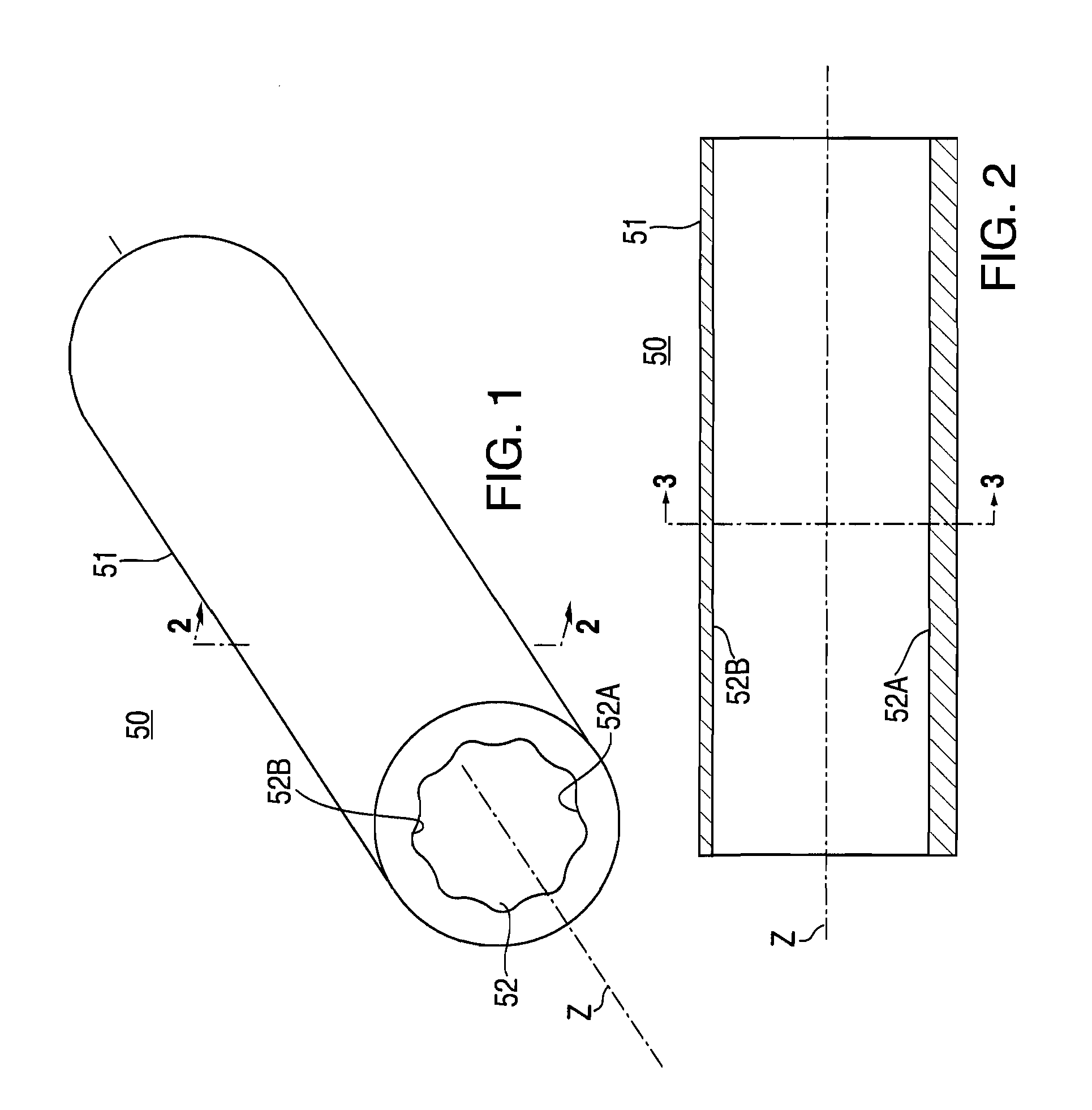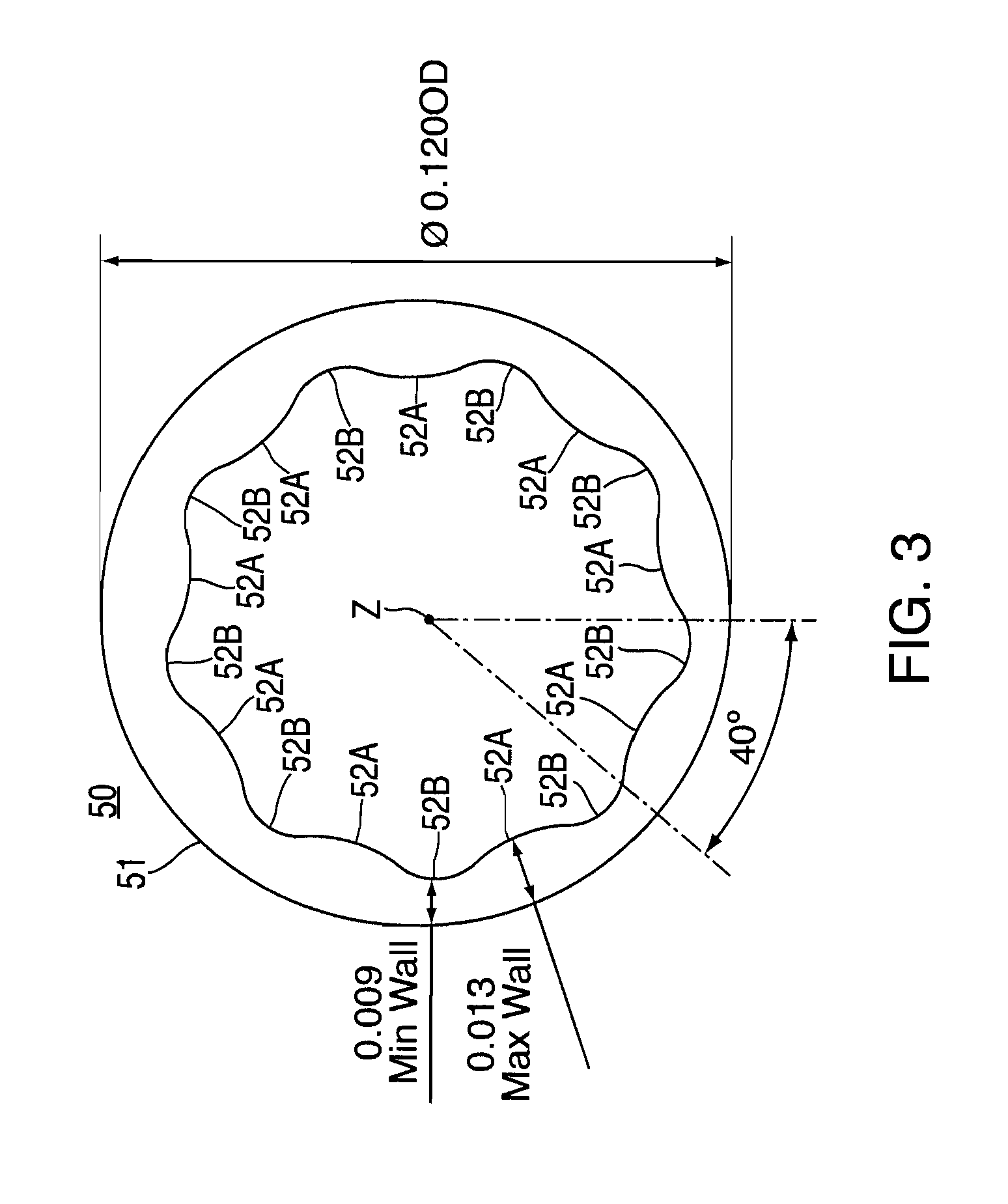Motion Transmitting Cable Liner and Assemblies Containing Same
a technology of motion transmission cable and liner, which is applied in the direction of shafts, shafts for linear movement, shafts, etc., can solve the problems of cable conduit or sheath side walls being frequently subject to intermittent and potentially severe loading, wear of cable conduit and its liner, and conduit also being subject to abrasion, etc., to achieve high load resistance and friction efficiency of such assemblies
- Summary
- Abstract
- Description
- Claims
- Application Information
AI Technical Summary
Benefits of technology
Problems solved by technology
Method used
Image
Examples
example 1
[0039]A low load ambient S-test was performed to show the improved frictional efficiency of cable assemblies having liners according to the present invention. A liner was formed as in Comparative Example 1, except the inner surface was as indicted in FIGS. 2 and 3. The tubular product was subject to the low load, ambient S-test, as described in Comparative Example 1A. The initial frictional efficiency was found to be 88.5%, an increase over the initial frictional efficiency of the liner tested in Comparative Example. Also the frictional efficiency after 400,000 cycles was substantially undiminished, and ended with a value of 86.2% after 500,000 cycles of operation.
TABLE IInitialAfterFrictional50KEfficiencycycles100K200K300K400K500KComparative88.588.989.289.288.988.686.2Example 1Example 186.286.286.086.086.586.284.7
example 2
[0040]A low load ambient S-test is performed to show the improved noise production characteristics of cable assemblies having liners according to the present invention. A liner was formed as in Comparative Example 2, except the inner surface was as indicted in FIGS. 2 and 3. The tubular product was subject to the low load, ambient S-test, as described in Comparative Example 2. The noise production is found to be less than the initial noise production of the assembly in Comparative Example 2. The preferred extent of noise production is reported in Table 2 below:
TABLE 2Reduction %Reduction %Initial NoiseAfter 250KAfter 500KReduction %cyclescyclesPreferred>10%>10%>10%Noise ReductionMore Preferred>15%>15%>15%Noise ReductionEven More Preferred>25%>25%>25%Noise Reduction
PUM
 Login to View More
Login to View More Abstract
Description
Claims
Application Information
 Login to View More
Login to View More - R&D
- Intellectual Property
- Life Sciences
- Materials
- Tech Scout
- Unparalleled Data Quality
- Higher Quality Content
- 60% Fewer Hallucinations
Browse by: Latest US Patents, China's latest patents, Technical Efficacy Thesaurus, Application Domain, Technology Topic, Popular Technical Reports.
© 2025 PatSnap. All rights reserved.Legal|Privacy policy|Modern Slavery Act Transparency Statement|Sitemap|About US| Contact US: help@patsnap.com



